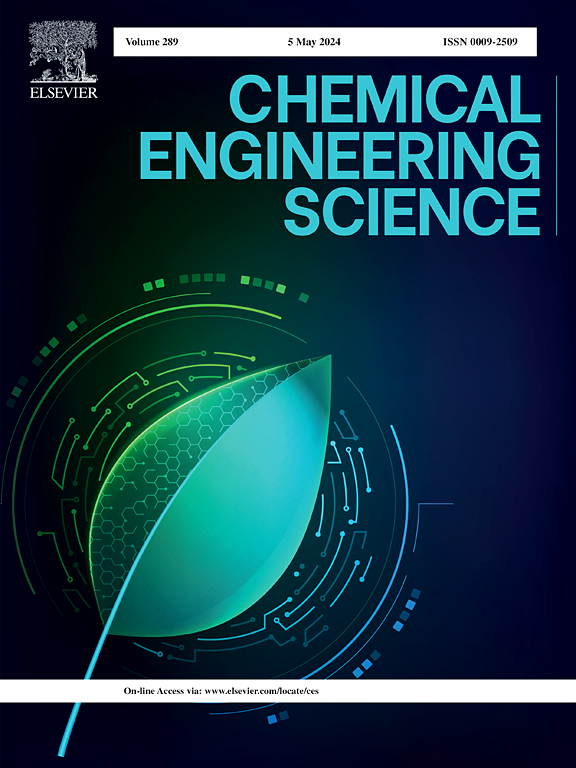桥接羟基功能化氧化镁作为一种高效的非均相氢键供体催化剂,用于二氧化碳固定成碳酸丙烯
IF 4.3
2区 工程技术
Q2 ENGINEERING, CHEMICAL
引用次数: 0
摘要
利用非均相氢键供体(HBD)将环氧化物和CO2高效转化为环状碳酸盐是绿色化学领域迫切需要的,但也是具有挑战性的。在此,我们报道了一种桥接羟基功能化的MgO作为一种高效的非均相HBD催化剂,促进环氧化物与CO2的环加成开环。通过调整焙烧温度分布来调整脱水反应平衡,构建了不同密度HBD的MgO (MgO- h)。结果表明,在没有碱性卤化物的情况下,MgO-H的环氧丙烷转化率从65.4 %提高到96.8% %,同时保持了较高的碳酸丙烯酯选择性(98.5% %)。此外,基于多种原位技术和DFT计算,发现HBD可以辅助Mg2+ - o2 - Lewis酸碱对活化环氧化物。这项工作提出了一种有效的策略来修饰氧化物表面的羟基,以设计二氧化碳环加成的非均相HBD催化剂。本文章由计算机程序翻译,如有差异,请以英文原文为准。


Bridging hydroxyl-functionalized MgO as an efficient heterogeneous hydrogen-bond-donor catalyst for CO2 fixation into propylene carbonates
Employing heterogeneous hydrogen-bond-donor (HBD) for the efficient conversion of epoxides and CO2 into cyclic carbonates is highly desired yet challenging in the field of green chemistry. Herein, we report a bridging hydroxyl-functionalized MgO serve as an efficient heterogeneous HBD catalyst to facilitate the ring-opening of epoxides for cycloaddition with CO2. MgO with various density of HBD (MgO-H) were constructed by adjusting the equilibrium of dehydration reaction via tuning calcination temperature distribution of MgO particles. Consequently, MgO-H shows significantly increased propylene epoxide conversion from 65.4 % to 96.8 % while maintaining high propylene carbonate selectivity (98.5 %) in the absence of alkaline halides. Furthermore, based on multiple in situ techniques and the DFT calculations, it is found that the HBD could assisted with the Mg2+–O2- Lewis acid-base pairs to activate the epoxides. This work presents an efficient strategy for modifying the hydroxyl groups on oxide surfaces to engineer heterogeneous HBD catalysts for CO2 cycloaddition.
求助全文
通过发布文献求助,成功后即可免费获取论文全文。
去求助
来源期刊

Chemical Engineering Science
工程技术-工程:化工
CiteScore
7.50
自引率
8.50%
发文量
1025
审稿时长
50 days
期刊介绍:
Chemical engineering enables the transformation of natural resources and energy into useful products for society. It draws on and applies natural sciences, mathematics and economics, and has developed fundamental engineering science that underpins the discipline.
Chemical Engineering Science (CES) has been publishing papers on the fundamentals of chemical engineering since 1951. CES is the platform where the most significant advances in the discipline have ever since been published. Chemical Engineering Science has accompanied and sustained chemical engineering through its development into the vibrant and broad scientific discipline it is today.
 求助内容:
求助内容: 应助结果提醒方式:
应助结果提醒方式:


